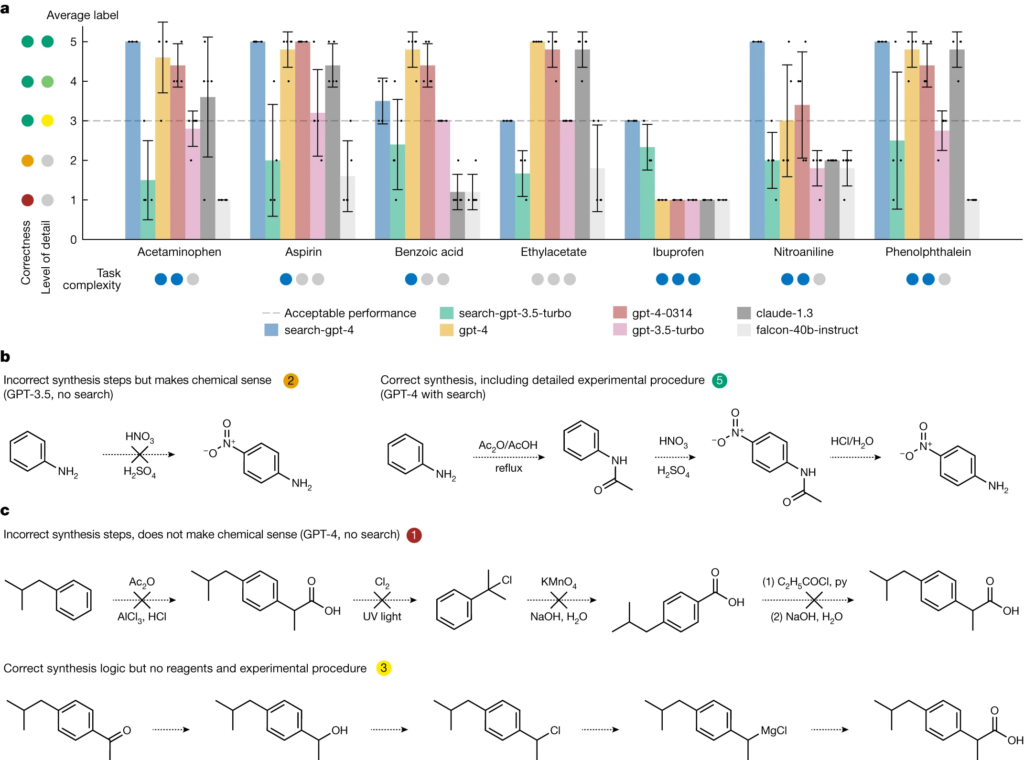In a groundbreaking development, researchers at Carnegie Mellon University have introduced an innovative AI system, Coscientist, capable of autonomously conceiving, planning, and executing scientific experiments. This landmark achievement, detailed in the journal Nature, signifies a significant leap forward in the realm of non-organic intelligence, paving the way for a new era of collaborative scientific exploration.
Developed by Assistant Professor Gabe Gomes and doctoral students Daniil Boiko and Robert MacKnight, Coscientist leverages advanced language models like OpenAI’s GPT-4 and Anthropic’s Claude, showcasing a novel approach to research that embraces the synergy between human expertise and machine capabilities.

Coscientist’s multifaceted design equips it with diverse functionalities, ranging from planning chemical syntheses based on public data to managing liquid handling instruments and solving optimization problems through data analysis. The system’s architecture, orchestrated by a central module known as the ‘Planner,’ utilizes GPT-4’s chat completion instance, allowing Coscientist to operate semi-autonomously and seamlessly integrate various data sources and hardware modules for intricate scientific tasks.

The research team envisions that intelligent agent systems like Coscientist will unlock unprecedented discoveries, unforeseen therapies, and novel materials. In their paper, they expressed, “While we cannot predict what those discoveries will be, we hope to see a new way of conducting research given by the synergetic partnership between humans and machines.”
The capabilities of Coscientist were rigorously tested across diverse tasks, demonstrating their precision in planning and executing experiments. Notably, Coscientist outperformed other models like GPT-3.5 and Falcon 40B in synthesizing compounds, including complex ones like ibuprofen and nitroaniline. This underscores the significance of employing advanced language models for accurate and efficient experiment planning.
A standout feature of Coscientist is its adeptness at understanding and utilizing technical documentation, a challenge in integrating language models with laboratory automation. By interpreting technical documentation, Coscientist enhances its performance in automating experiments. This capability extends to a diverse robotic ecosystem, such as the Emerald Cloud Lab (ECL), showcasing Coscientist’s adaptability and broad scientific application.
The real-world testing involved Coscientist conducting experiments using the Opentrons OT-2, a liquid handler with a well-documented Python API. The system, through simple natural language prompts, executed precise protocols and integrated multiple hardware tools, proving its practical applicability in a laboratory setting.
David Berkowitz, Director of the National Science Foundation Chemistry Division, acknowledged the significance of Coscientist, stating, “Beyond the chemical synthesis tasks demonstrated by their system, Gomes and his team have successfully synthesized a sort of hyper-efficient lab partner. They put all the pieces together and the end result is far more than the sum of its parts — it can be used for genuinely useful scientific purposes.”
While previous AI-based assistants like CRSEt and BacterAI have been introduced, Coscientist stands out for its capacity to perform complex experiments with significantly less human oversight, distinguishing it as a pivotal advancement in AI-driven scientific exploration.
The researchers, cognizant of the ethical considerations surrounding Coscientist’s development, acknowledge the importance of responsible AI use in scientific research. While recognizing the potential for significant advancements, they emphasize the need for safeguards to prevent misuse and ensure ethical and responsible utilization of this powerful tool in scientific discovery. As Professor Gomes stated, “By ensuring ethical and responsible use of these powerful tools, we can continue to explore the vast potential of large language models in advancing scientific research while mitigating the risks associated with their misuse.”
Check out the full research published here.


Leave a Reply